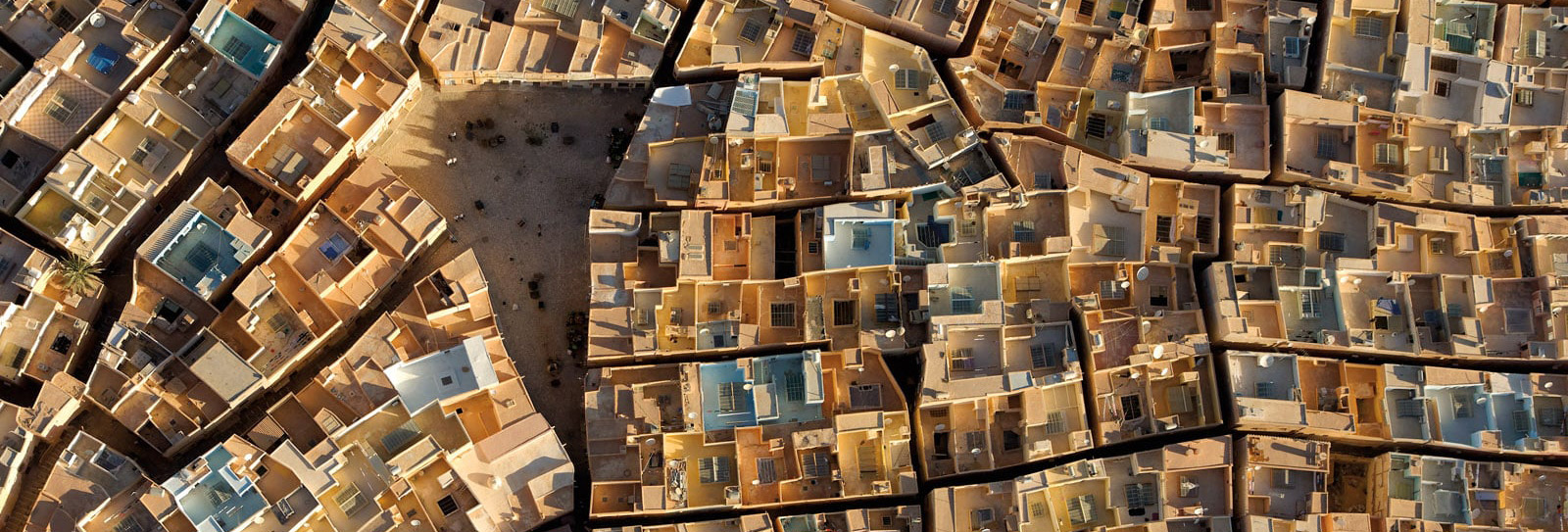
FirstLook: Beni Isguen, Algeria
- Arts
- Photography
1
Photograph by George Steinmetz
As a young college student in the 1980s, George Steinmetz hitchhiked in the desert lands of north-central Algeria along the Sahara. In 2009 he revisited the region, now as a world-renowned photojournalist working on a book about the world’s extreme deserts and the human adaptations and settlements in them.
He recalled the hilltop city of Ghardaa and its unique architecture. This city is actually comprised of five villages, among them Beni Isguen, which in 1982 was inscribed as part of a UNESCO World Heritage Site and regarded as the best-preserved example of the region’s traditional building styles and urban organization.
The day before this image was taken, Steinmetz flew up to get a view of the town using the foot-launched, motorized paraglider—at less than 45 kilograms, the lightest motorized aircraft in the world—that allowed him to make uniquely close, low-altitude aerial photographs in remote regions. The next morning at sunrise, he made multiple flyovers above Beni Isguen, bracing the camera between his legs in order to look straight down to the pattern and colors of the village’s walled, rooftop patios and narrow streets. “There are still parts of the world that live on, in a traditional way,” Steinmetz reflects. “It’s important to know there are other worlds out there.”
—Sarah Taqvi
@geosteinmetz
www.georgesteinmetz.com
You may also be interested in...

FirstLook: Duet
Arts
“Duet” comes from the Latin root word duo which means two. The Duet series focuses on double portraits, a tradition in West Africa.
FirstLook: Soaring off Ambon Island
Arts
This photo was taken off Ambon Island, East Indonesia in 2010. It is one of my favorites, illustrating the free-spirited nature of the children in the rural archipelago. While some children in the big cities may stay inside and play computer games, the children in Ambon with easy access to the water see the ocean surrounding their village as their playground.
Savoring Egypt
Arts
Rather than just telling travelers where to go, the guidebook Egypt: Inside Out by Trevor Naylor offers an inside-out perspective that evokes the experience of being there, inviting readers to embrace an almost meditative travel discipline of slowing down to take in the details and complexities of Egypt, moment by moment.